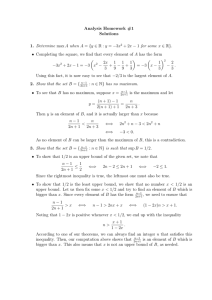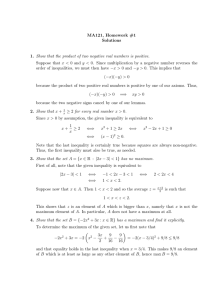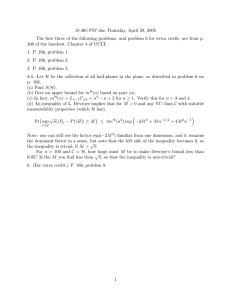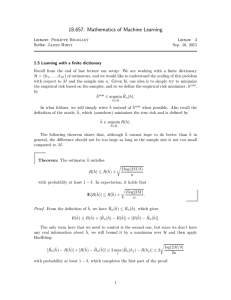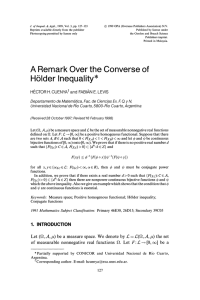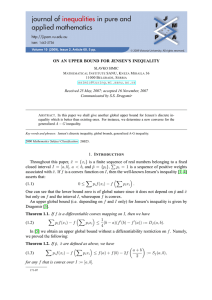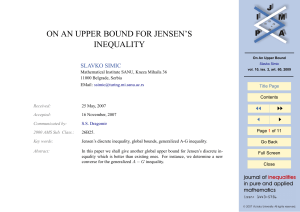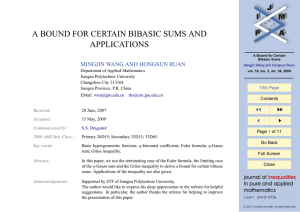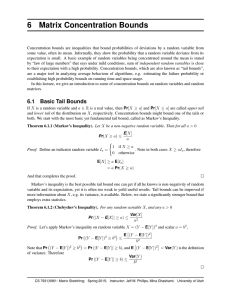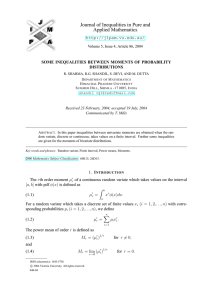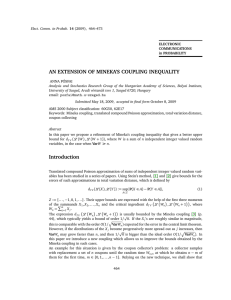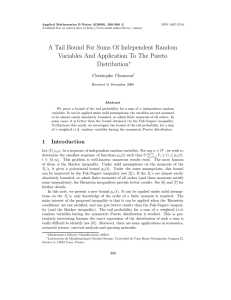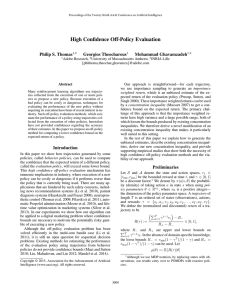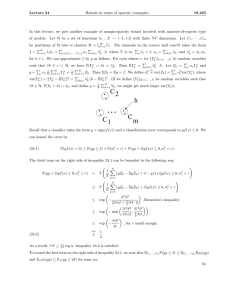MA121, Homework #1 Solutions Show that the set A A
advertisement
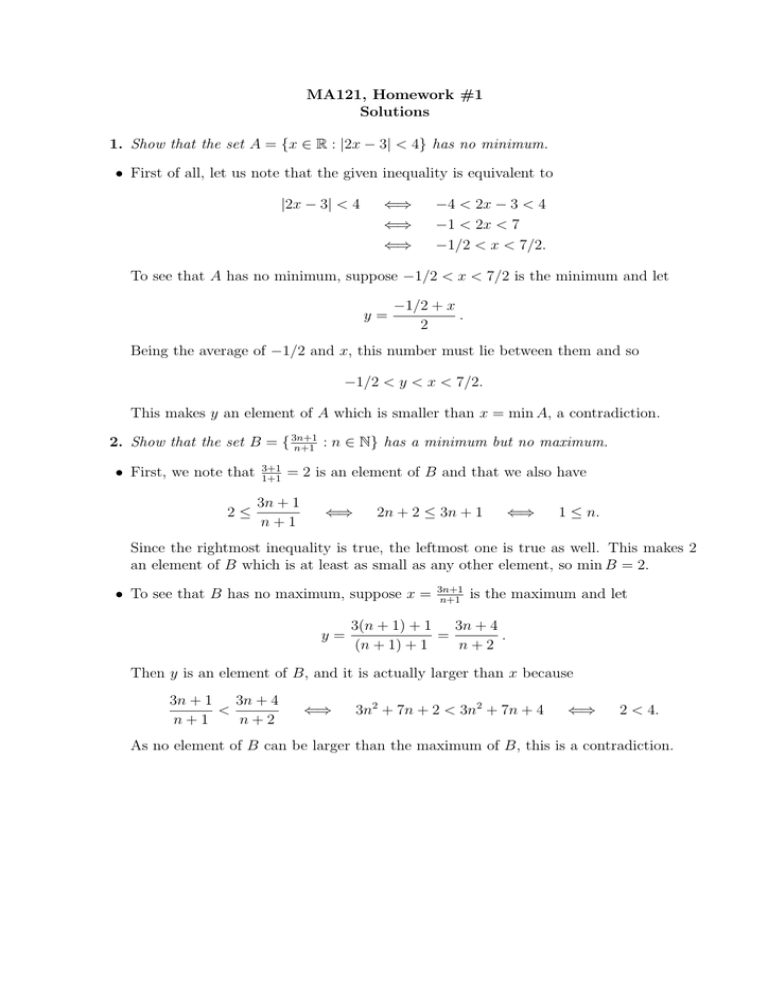
MA121, Homework #1
Solutions
1. Show that the set A = {x ∈ R : |2x − 3| < 4} has no minimum.
• First of all, let us note that the given inequality is equivalent to
|2x − 3| < 4
⇐⇒
⇐⇒
⇐⇒
−4 < 2x − 3 < 4
−1 < 2x < 7
−1/2 < x < 7/2.
To see that A has no minimum, suppose −1/2 < x < 7/2 is the minimum and let
y=
−1/2 + x
.
2
Being the average of −1/2 and x, this number must lie between them and so
−1/2 < y < x < 7/2.
This makes y an element of A which is smaller than x = min A, a contradiction.
2. Show that the set B = { 3n+1
: n ∈ N} has a minimum but no maximum.
n+1
• First, we note that
2≤
3+1
1+1
= 2 is an element of B and that we also have
3n + 1
n+1
⇐⇒
2n + 2 ≤ 3n + 1
⇐⇒
1 ≤ n.
Since the rightmost inequality is true, the leftmost one is true as well. This makes 2
an element of B which is at least as small as any other element, so min B = 2.
• To see that B has no maximum, suppose x =
y=
3n+1
n+1
is the maximum and let
3(n + 1) + 1
3n + 4
=
.
(n + 1) + 1
n+2
Then y is an element of B, and it is actually larger than x because
3n + 4
3n + 1
<
n+1
n+2
⇐⇒
3n2 + 7n + 2 < 3n2 + 7n + 4
⇐⇒
2 < 4.
As no element of B can be larger than the maximum of B, this is a contradiction.
3. Show that the set B = { 3n+1
: n ∈ N} is such that sup B = 3.
n+1
• To show that 3 is an upper bound of the given set, we note that
3n + 1
≤3
n+1
⇐⇒
3n + 1 ≤ 3n + 3
⇐⇒
1 ≤ 3.
Since the rightmost inequality is true, the leftmost one must also be true.
• To show that 3 is the least upper bound, we show that no number x < 3 is an upper
bound. Let us then fix some x < 3 and try to find an element of B which is bigger
than x. Since every element of B has the form 3n+1
, we need to make sure that
n+1
3n + 1
>x
n+1
⇐⇒
3n + 1 > nx + x
⇐⇒
(3 − x)n > x − 1.
Since 3 − x is positive by above, we thus need to make sure that
n>
x−1
.
3−x
According to one of our theorems, we can always find an integer n that satisfies this
inequality. Then our computation above shows that 3n+1
is an element of B which is
n+1
larger than x. This also means that x is not an upper bound of B, as needed.
4. Determine max C when C = {y ∈ R : y = 1 + x − x2 for some x ∈ R}.
• To determine the maximum of the given set, we complete the square to get
µ
¶
¡ 2
¢
1 1
2
2
1+x−x =− x −x−1 =− x −x+ − −1
4 4
2
= −(x − 1/2) + 5/4
≤ 5/4.
Note that equality holds in the last inequality when x = 1/2. This means that 5/4 is
an element of C which is at least as large as any other element, hence max C = 5/4.
